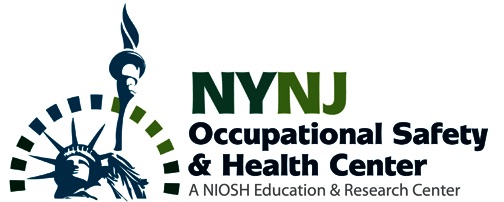We visited Materion in Elmore, OH. They manufacture
beryllium alloys. The tour they provided gave us an opportunity to see their
products manufactured. These include beryllium alloys that are made into strip
coils, wires, and rods, bars, and tubes. They do not manufacture any particular
end-product, but the beryllium alloys materials are included in many of the
products we use and are used across the globe. These include computers and cell
phones, and in the oil and gas, and aerospace industries. Throughout the visit, we saw how they address
safety and health issues of their workforce.
Most of our group were in personal protective equipment, including tyvek
suits, powered air purifying respirators, and hearing protection. These visited areas that had the potential
for exposure. Others visited areas that did not require the use of respiratory
protection.
The Materion tour allows us to see how workers are
protected with PPE and engineering controls, so that exposure to hazardous
materials is minimized or eliminated.
Thanks to our hosts at Materion for providing this opportunity for our
visit.





2 comments:
Yesterday's ERC site visit course tour was to Materion's beryllium processing facility in Elmore, Ohio, the company's primary site for production of beryllium alloys (mainly becu). The company's site has made these lighter-weight alloys for military as well as consumer applications. We observed that the site has well-enclosed processes for different aspects of the alloy production process. Also on-site is the water treatment facility, where the by-product wastes are diluted prior to release.
Toxicity due to beryllium containing particulates (oxides and fluorides), following inhalation, incite intense hypoxic inflammation and associated fibrosis and 'sensitization' likely due to the high charge:mass ratio (2 plus, atm mass 9) of the ionic form within agglomerated particulates. This distinction between beryllium containing particulates from that of other heavy metals (lead, gadolinium, boron, which are positivily charged but with poor concentration of positive charge). In this respect, hexavalent chromium (6 plus, mw 48) is more alike beryllium, in the delayed-type of type hypersensitivity that results from exposure to it as well.
This suggests that the antigen-presenting response is particularly 'sensitive' to concentration of positive charge.
From the therapeutic standpoint, since it does not have a large nuclear surface area, it would not have utility for the binary neutron capture therapeutic approach (local release of alpha particles following neutron annihilation) in contrast to, for example, boron or gadolinium, which do, but useful only if delivered at relatively high concentrations locally within solid cancer tissue.
There is an elegant conservation of the body's pathophysiologic response..
Hemant
Good experience in the berrylium plant, actually got to wear a PAPR respirator, which gave me a little insight to how workers felt with them on, I often do physicals for respirator clearance and this experience definitely helps. I was impressed with the plants employee safety programs i.e workers involved in casting were given a break every 15 mins in a cold room, with fluids, ice to prevent heat stroke.
Post a Comment